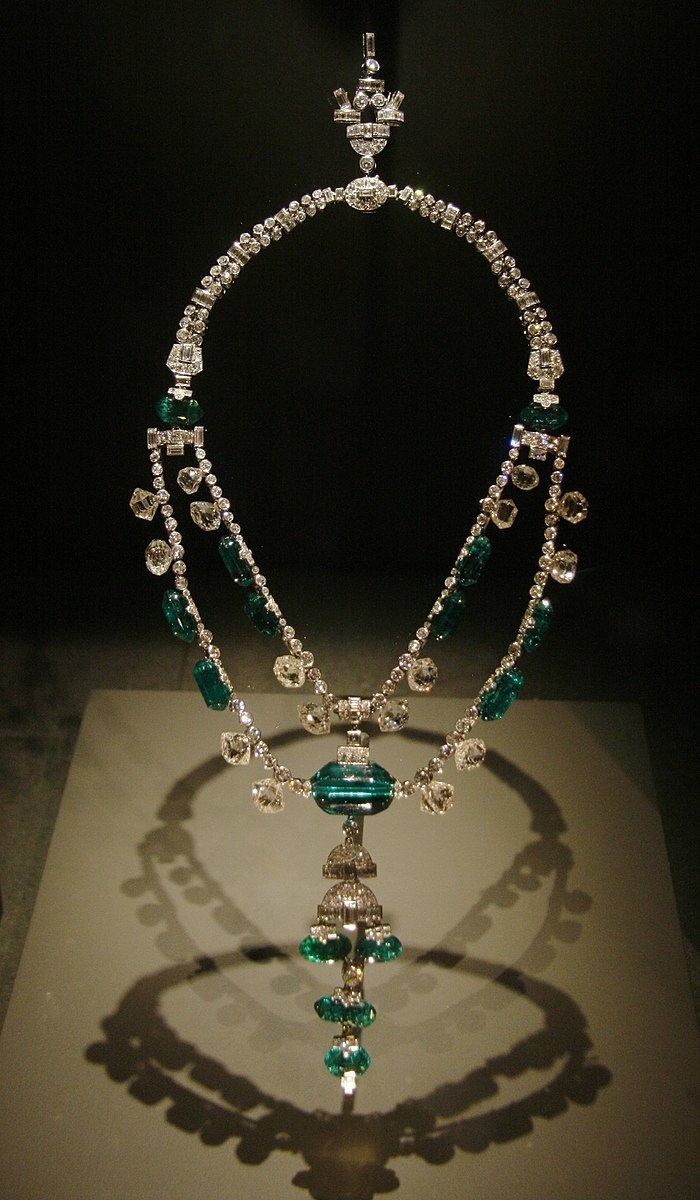 | ||
The Spanish Inquisition Necklace is a diamond and emerald-studded necklace. As of 2008, it is on display at the Smithsonian Institution in Washington, D.C., United States. It was given its name by Harry Winston, the American jeweller who acquired it from the Maharaja of Indore, and has no known connection with the historical Spanish Inquisition.
Contents
Provenance
The emeralds threaded onto the necklace were originally mined in Colombia. The diamonds were mined in India. While the necklace's gemstones are believed to have been cut in India in the 17th century, the early history of the necklace itself is unknown. American jeweller Harry Winston, who named the necklace, claimed that it was owned first by Spanish royalty. However, the first recorded owner of the piece was Tukoji Rao III, Maharaja of Indore, then a princely state within India, in the early 20th century. Upon his abdication, the necklace was passed to his son, Yashvantrao II, who took up his father's throne.
In 1947, Yashvantrao sold the necklace to Harry Winston. Winston lent the necklace out that year to actress Katharine Hepburn, who wore it to the 19th Academy Awards ceremony. The necklace formed part of Winston's "Court of Jewels", a nationally touring exhibition of jewels and jewellery including the Hope Diamond and the Star of the East. In 1955, Winston sold the necklace to Cora Hubbard Williams of Pittsburgh, Pennsylvania. Williams held the necklace until 1972, when she bequeathed it to the Smithsonian Institution. Since then, it has been on display in the Janet Annenberg Hooker Hall of Geology, Gems and Minerals of the National Museum of Natural History in the Smithsonian Institution in Washington D.C.
Design
The upper half of the necklace consists of many small diamonds threaded onto a silver chain. The lower half of the necklace is divided into two concentric semi-circular strands, each carrying eight pairs of "football-shaped" diamonds and four pairs of barrel-cut emeralds, arranged symmetrically. The centre of the lower strand holds a large emerald supporting a pendant which itself holds five smaller emeralds. The point where the upper and lower halves of the necklace join is marked by two large emeralds threaded onto the chain. Altogether, there are 15 emeralds and 374 diamonds in the necklace. The diamonds of the Spanish Inquisition Necklace are the oldest examples of cut diamonds in the Smithsonian Institution's National Gem Collection.
